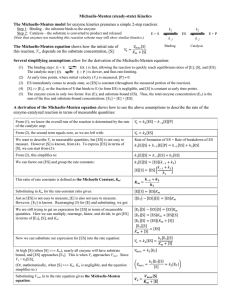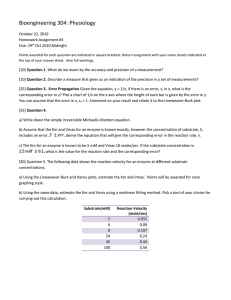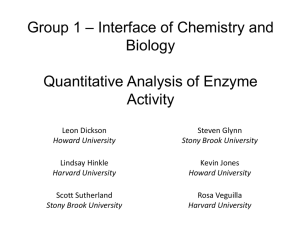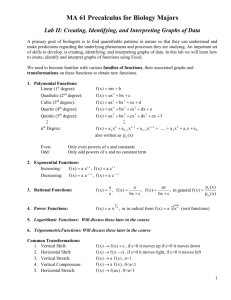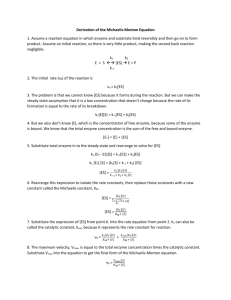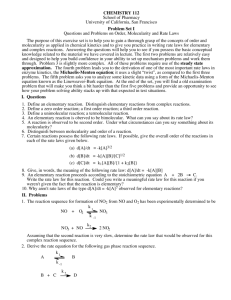PROBLEM SET 5 Enzymes
advertisement
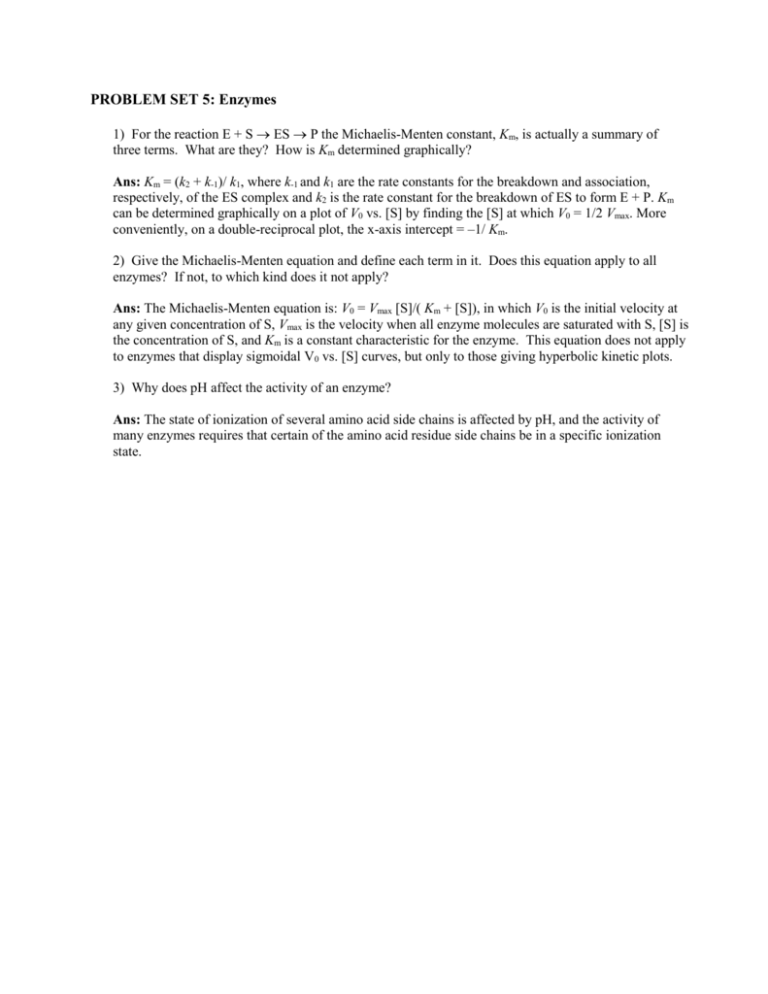
PROBLEM SET 5: Enzymes 1) For the reaction E + S ES P the Michaelis-Menten constant, Km, is actually a summary of three terms. What are they? How is Km determined graphically? Ans: Km = (k2 + k-1)/ k1, where k-1 and k1 are the rate constants for the breakdown and association, respectively, of the ES complex and k2 is the rate constant for the breakdown of ES to form E + P. Km can be determined graphically on a plot of V0 vs. [S] by finding the [S] at which V0 = 1/2 Vmax. More conveniently, on a double-reciprocal plot, the x-axis intercept = –1/ Km. 2) Give the Michaelis-Menten equation and define each term in it. Does this equation apply to all enzymes? If not, to which kind does it not apply? Ans: The Michaelis-Menten equation is: V0 = Vmax [S]/( Km + [S]), in which V0 is the initial velocity at any given concentration of S, Vmax is the velocity when all enzyme molecules are saturated with S, [S] is the concentration of S, and Km is a constant characteristic for the enzyme. This equation does not apply to enzymes that display sigmoidal V0 vs. [S] curves, but only to those giving hyperbolic kinetic plots. 3) Why does pH affect the activity of an enzyme? Ans: The state of ionization of several amino acid side chains is affected by pH, and the activity of many enzymes requires that certain of the amino acid residue side chains be in a specific ionization state.
